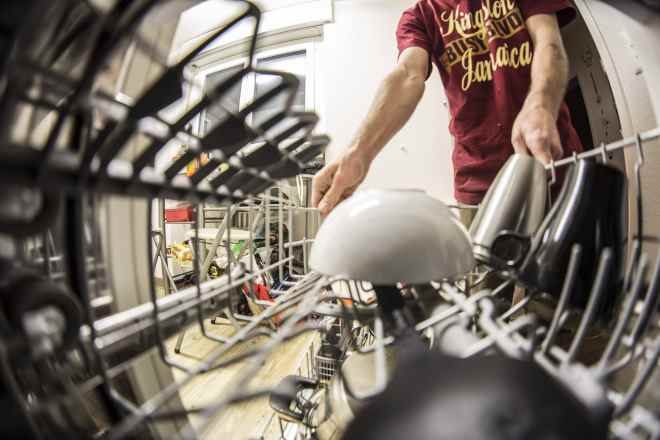Fresh Food, Delivered with Care
Food delivery services are now a common part of daily routines. They provide access to local dishes and a range of familiar meals with minimal effort. Orders are typically delivered fresh and within expected time frames. From traditional cuisine to new recipe options, these services make different types of food accessible for home dining in a practical and convenient way.

The rise of food delivery has reshaped daily routines across South Africa. From urban centres to suburban neighbourhoods, people now rely on digital platforms to bring restaurant-quality meals and fresh groceries directly to their doorsteps. This shift reflects changing priorities: less time spent cooking, more emphasis on variety, and a growing appreciation for services that respect both quality and convenience.
What sets a reliable delivery service apart isn’t just speed—it’s the attention given to every stage of the process. From the moment an order is placed to the final handoff, multiple factors determine whether your meal arrives fresh, intact, and ready to enjoy. Understanding these elements helps you make informed choices and set realistic expectations for what modern delivery can offer.
Careful Packaging – Every Order Handled Thoughtfully
Packaging plays a critical role in preserving food quality during transit. Thoughtful providers invest in insulated containers, leak-proof seals, and temperature-controlled materials to protect meals from environmental factors. Hot dishes stay warm, cold items remain chilled, and delicate components like sauces or garnishes are secured separately to prevent spills.
Beyond functionality, careful packaging reflects a provider’s commitment to customer satisfaction. Secure wrapping reduces the risk of contamination, while eco-friendly materials appeal to environmentally conscious consumers. Many services now use biodegradable boxes, recyclable utensils, and minimal plastic to align with sustainable practices. This attention to detail ensures that when you open your delivery, everything looks as appealing as it would in a restaurant setting.
Drivers also play a part in maintaining package integrity. Training programmes emphasise gentle handling, proper vehicle storage, and timely delivery to minimise exposure to heat or rough conditions. When all these elements work together, the result is a seamless experience that prioritises both safety and presentation.
Meals Made for Your Moment
Food delivery isn’t just about convenience—it’s about matching meals to your specific needs and occasions. Whether you’re hosting a family gathering, fuelling a late-night study session, or treating yourself after a long day, the right service adapts to your lifestyle. Menu variety matters here: platforms offering everything from comfort classics to international cuisines provide flexibility for diverse tastes and dietary preferences.
Customisation options further enhance this personalisation. Many providers allow you to adjust spice levels, swap ingredients, or request allergen-free preparations. This level of control transforms delivery from a generic transaction into a tailored dining experience. Meal kits, for example, cater to those who enjoy cooking but lack time for grocery shopping, delivering pre-portioned ingredients with step-by-step recipes.
Timing also shapes how well a meal fits your moment. Reliable platforms offer real-time tracking, accurate delivery windows, and responsive customer support to address unexpected delays. When a service respects your schedule and preferences, it becomes more than a utility—it becomes a trusted partner in daily life.
Simple Choices
Navigating food delivery platforms should feel intuitive, not overwhelming. User-friendly interfaces, clear menu descriptions, and transparent pricing help streamline the decision-making process. The best services prioritise simplicity: straightforward ordering steps, visible delivery fees, and honest preparation times eliminate guesswork and build trust.
Filters and search functions make it easier to narrow down options based on cuisine type, dietary restrictions, or price range. Whether you’re vegetarian, gluten-intolerant, or simply craving a specific dish, efficient categorisation saves time and reduces frustration. Reviews and ratings from other customers provide additional guidance, offering insights into portion sizes, flavour quality, and overall satisfaction.
Payment flexibility adds another layer of convenience. Multiple payment methods—credit cards, digital wallets, cash on delivery—accommodate different preferences and ensure accessibility. Loyalty programmes and promotional offers reward repeat customers, making regular use more economical without sacrificing quality.
Understanding Delivery Costs and Options
While convenience is valuable, understanding the financial side of food delivery helps you manage expectations and budget effectively. Costs vary based on distance, order size, and provider policies. Delivery fees typically range from R15 to R50, though some platforms waive fees for orders above a certain threshold, often around R150 to R200. Service fees, small order surcharges, and tips can add to the total, so reviewing the breakdown before confirming is wise.
Below is a general comparison of typical delivery structures from common provider types in South Africa:
| Provider Type | Delivery Fee Range | Minimum Order | Key Features |
|---|---|---|---|
| Major Platforms | R10 – R30 | R50 – R100 | Wide restaurant selection, tracking |
| Grocery Delivery | R30 – R60 | R150 – R300 | Fresh produce, scheduled slots |
| Restaurant Direct | R0 – R40 | Varies | Direct support, loyalty rewards |
| Meal Kit Services | R0 – R50 | R200 – R400 | Pre-portioned ingredients, recipes |
Prices, rates, or cost estimates mentioned in this article are based on the latest available information but may change over time. Independent research is advised before making financial decisions.
Ensuring Freshness and Quality
Freshness hinges on timing and handling. Reputable services partner with restaurants and suppliers that prioritise food safety standards, including proper refrigeration, hygienic preparation, and timely dispatch. Cold chain logistics—maintaining consistent temperatures from kitchen to doorstep—are especially crucial for perishable items like dairy, seafood, and fresh produce.
Quality assurance extends beyond temperature control. Many platforms conduct regular audits of partner establishments, checking for cleanliness, ingredient sourcing, and compliance with health regulations. Customer feedback loops allow users to report issues, prompting swift corrective action and continuous improvement.
For groceries, freshness indicators like expiration dates, packaging condition, and produce appearance help you assess quality upon arrival. If something doesn’t meet expectations, responsive customer service teams typically offer refunds, replacements, or credits, reinforcing accountability and trust.
Conclusion
Food delivery has evolved into a sophisticated service that balances convenience, quality, and personalisation. By prioritising careful packaging, adapting to individual moments, and simplifying choices, providers create experiences that go beyond mere meal transport. Understanding the factors that influence cost, freshness, and reliability empowers you to select services that align with your needs and values. As the industry continues to innovate, the focus remains clear: delivering not just food, but care, consistency, and confidence with every order.




